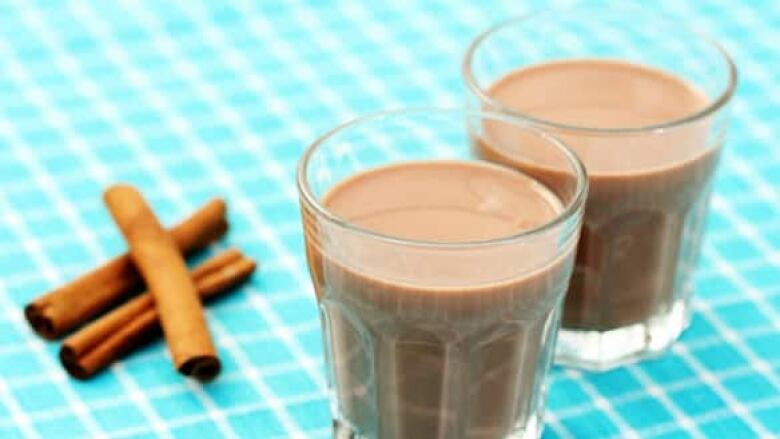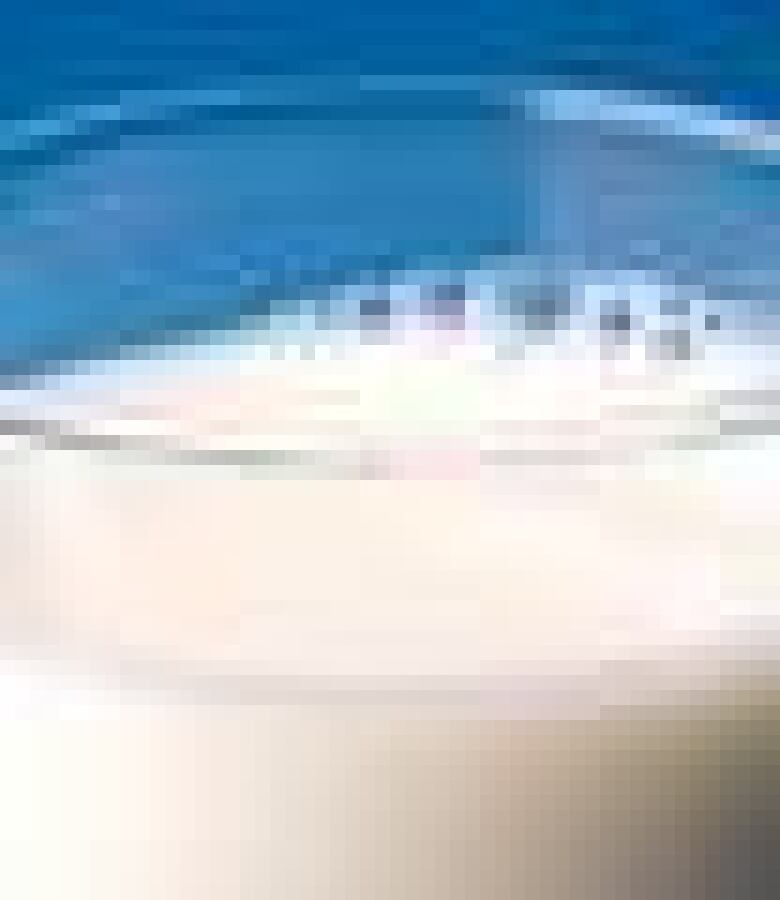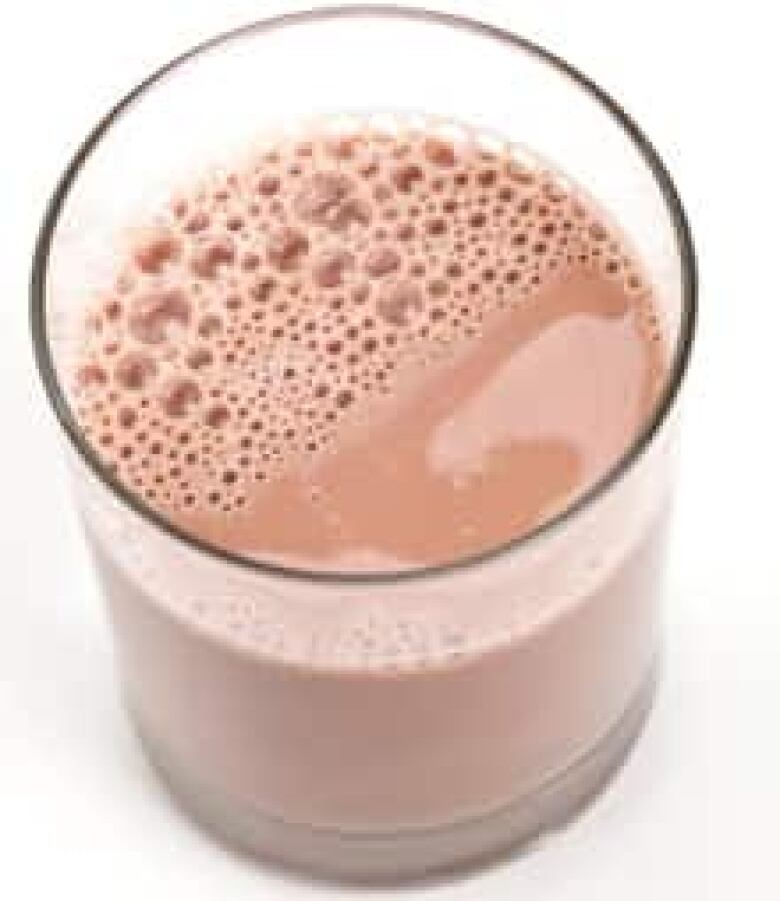Milking meaning from the ingredients label

Consider the label before chugging that next glass of sweet chocolate milk. What are carrageenan or palmitate? Do you know what the term "modified milk ingredients" means and why they are used? And is your carton in fact labelled "milk," or the rather quizzical "dairy beverage"?
We're taking a closer look at the label in a bid to help the curious consumer with a penchant for detail. Let's begin with the Canadian Food and Drug Regulations, whichset out some strict rules about what can and can't be called "milk." For example, a company cannot add modified milk ingredients and still call the final product milk on its label.
"There is a regulatory standard in the Food and Drug Regulations for milk, partly skimmed milk and skimmed milk," theCanadian Food Inspection Agencysaid in a statement to CBC News. "Basically it is milk, straight from the cow (or other mammal), with the fat level adjusted for skimmed and partly skimmed milks and vitamins A and/or D added."
The same rules apply to flavoured milk such as chocolate milk. The Canadian Food and Drug Regulations state that flavoured milk may be made of milk (or a milk product such as milk powder, skim milk, evaporated milk, etc.), a flavouring preparation and a sweetening agent. It must also contain at least three per cent milk fat, no more than 0.5 per cent starch, and added vitamin D. It may also include salt, food colour, lactase and a stabilizing agent.
Many chocolate milk products begin with the following ingredients:

Partly skimmed milk
Partly skimmed milk is as it sounds milk that has had some of its fat content removed.
The Canadian Food and Drug Regulations define the product as that which is "derived from milk that has had its fat content reduced by mechanical separation or adjusted by the addition of cream, milk, partly skimmed milk or skim milk, either singly or in combination."

Vitamin A
Vitamin A is valued for maintaining vision andcell and bone growth, and a healthy immune system.
The fat-soluble vitamin occurs naturally in animal products, including whole milk.
The CanadianFood and Drug regulations outline the precise quantity of vitamin A that may be added, noting it must be "in such an amount that a reasonable intake of the milk contains not less than 1,200 international units and not more than 2,500 international units of vitamin A."
Palmitate
This compound is sometimes added to low-fat milk to help replenish vitamin levels lost when milk fat is filtered out.
Vitamin D
Vitamin D helps with the absorption of calcium and phosphorous, promotes bone growth and helps stave off osteoporosis.
In 1965, Health Canada allowed for fluid milk to be fortified with vitamin D, and cases of severe rickets across the country declined sharply. Currently, Health Canada recommends 400 international units of vitamin D per day for adults 19 to 50 years of age. The Food and Drug Regulations outline that fortified milk may be fortified with the fat-soluble vitamin "in such an amount that a reasonable daily intake of the milk contains not less than 300 international units and not more than 400 international units of vitamin D."

Sugar
The amount of sugars in a 250millilitre serving ofone per centpartly skimmed chocolate milk totals 26.26 grams, according to Health Canada's Canadian Nutrient File.
By comparison, the same serving size of regularone per centmilk contains 13.41 g. (Sugars on the Nutrition Facts labels refer to naturally occurring and added sugars. Naturally occurring sugars are found in lactose in milk.)

Cocoa
The Canadian Food and Drug Regulations outline that a cocoa product is one made from cocoa beans, including cocoa nibs, cocoa liquor, cocoa mass, unsweetened chocolate, bitter chocolate, chocolate liquor, cocoa, low fat cocoa, cocoa powder and low fat cocoa powder.
Artificial flavour
As a class, artificial flavours are chemically produced agents designed to mimic natural flavours. Eric Schlosser in his book Fast Food Nation: The Dark Side of the All-American Meal notes that one artificial flavour cancomprise more than 50 ingredients. The Canadian Food and Drug Regulations outline that artificial flavours used in Canadian products can contain a sweetening agent, food colour and designated classes of preservatives. It can also contain, among other things, benzyl alcohol, ethyl acetate, isopropyl alcohol and edible vegetable oil.
Carrageenan
This additive is a polysaccharide gum extracted from Irish moss. Carrageenan is added to dairy products to help increase the product's thickness.
Cellulose gum
Cellulose gum is used as an emulsifying, stabilizing or thickening agent. It is extracted from cotton seeds and wood pulp.
Guar gum
Guar gum, culled from the seed of guar plants, is used as thickening and stabilizing agent in some foods as well as lotions and creams.
Introducing the dairy beverage

When other ingredients are added to the mix, the case becomes a bit more complex. Savvy consumers andbloggershave noticed products in the dairy aisle branded as "dairy beverages," or "chocolate drinks."
The Canadian blogger William,writing under the moniker Talking Head,zeroed in on some of these dairy beverages, saying that the change was not initially obvious to him.
"I felt that the dairy companies were attempting to quietly substitute chocolate milk beverage, and later chocolate dairy beverage, for real chocolate milk, presumably so that they could save money,"hetold CBC. "The packaging was nearly the same as the product it had replaced; it simply had a longer list of ingredients and a slightly different name. For grocery stores that carried Parmalat (Beatrice) or Agropur (Sealtest) products, consumers weren't given a choice. Real chocolate milk was just gone, and we weren't supposed to notice."
Some of these products have also raised the ire of the Dairy Farmers of Ontario.
"These drinks and beverages resemble chocolate milk, but consumers need to make sure they are not fooled," the group says on its website. "These drinks contain other ingredients such as modified milk ingredients and/or whey products, and that means they are not real chocolate milk."
For its part, Sealtestsaysit has changed itsproduct's namein compliance with Canadian regulations.
"Sealtest Chocolate Dairy Beverage is still all-natural, but it contains both milk and modified milk ingredients as well as cocoa powder, and sugar, so it now has to be called a dairy beverage," the company says on its website. "The change in name is a part of the Canadian government's overall aim to improve the clarity of communication on all food packaging."
The Canadian Food Inspection Agency defines modified milk ingredients as any of the following in liquid, concentrated, dry, frozen or reconstituted form (ourdescriptions added in italics):
- Calcium-reduced skim milk
- Casein (This a protein in milk and isused as a binding agent. Caseins are also used in wax to shine fruits and vegetables, as an adhesive and to fortify bread. Caseins contain common amino acids.)
- Caseinate (Thisprotein isderived from skim milk. Bodybuilders sometimes take powder enriched with calcium caseinate because it releases proteins at an even, measured pace.)
- Cultured milk products (milk products that have been altered through controlled fermentation this includes products such as yogurt, sour cream andcultured buttermilk).
- Milk serum proteins
- Ultrafiltered milk (The Canadian Food and Drug Regulations defines this type of milk as that which "has been subjected to a process in which it is passed over one or more semi-permeable membranes to partially remove water, lactose, minerals and water-soluble vitamins without altering the whey protein to casein ratio and that results in a liquid product.")
- Whey (serum byproduct created in the manufacture of cheese.)
- Whey butter (typically oily in composition, whey butter is made from cream separated from whey.)
- Whey cream (cream skimmed from wheythis is sometimes used as a substitute for sweet cream and butter.)
- Any component of milk that has been altered from the form in which it is found in milk.
Umbrella label offers flexibility
Art Hill, a professor and chair of the University of Guelph's department of food science, says modified milk ingredients are likely used because it gives the manufacturers flexibility to tinker with their recipes, noting that ingredient prices and availability vary from day to day.
"Say for example I'm formulating processed cheese, and in processed cheese the number one ingredient should be cheese of some description, but it will contain some whey powder perhaps and some skimmed milk powder," Hill said.
"The whey powder will be modified, it may have some milk protein concentrates, and so the precise formulation will vary to some extent from day to day depending on the cost of ingredients and the availability of certain ingredients. The manufacturer will have a formula with ranges of ingredients, and they can say, well, today, let's replace some of that whey powder with skim powder and some milk protein concentrate, or because either the whey isn't available, or it's more expensive this week or whatever."
'The only way to make an informed decision about these products is to check the Nutrition Facts label and compare it to the non-modified version of the product.' Adam Betzelt, dietitian
Adam Betzelt, a Calgary-based registered dietitian, says elements in modified milk ingredients vary notably on the nutritional spectrum.
"Many of these ingredients can add a nutritional benefit to a product caseins and whey can increase the protein content of a food. Whey cream, whey butter and butter oil may be calorically dense and contain a high proportion of saturated fat, but may also bring with it the fat-soluble vitamins Aand D," Betzelt said in an email.
Betzelt says that there is nothing bad or toxic about modified milk ingredients, but notes they may change the nutritional composition of the final product.
"The only way to make an informed decision about these products is to check the Nutrition Facts label and compare it to the non-modified version of the product," he said. "Be sure to check for any large changes in fat, carbohydrate, protein and sodium content. Likely nothing drastic would have changed, but the product might have a different texture, cost less or have a longer shelf life."












_(720p).jpg)


 OFFICIAL HD MUSIC VIDEO.jpg)
.jpg)



























































































